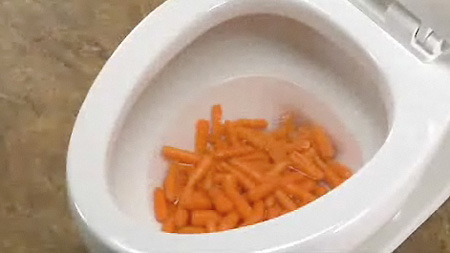Is it Safe to Dispose of Food Waste in the Toilet?
CallThe content on the next paragraphs relating to Think Twice Before Flushing Food Down Your Toilet is pretty much entertaining. Don't bypass it.

Introduction
Many people are commonly faced with the predicament of what to do with food waste, particularly when it pertains to leftovers or scraps. One typical concern that arises is whether it's alright to flush food down the toilet. In this article, we'll explore the reasons why individuals may take into consideration purging food, the effects of doing so, and alternative methods for correct disposal.
Reasons people could consider purging food
Lack of understanding
Some people may not know the possible injury triggered by purging food down the bathroom. They might incorrectly believe that it's a harmless technique.
Convenience
Purging food down the commode might look like a fast and very easy service to taking care of undesirable scraps, particularly when there's no close-by trash can available.
Laziness
In many cases, people might merely choose to flush food out of large laziness, without thinking about the effects of their actions.
Consequences of flushing food down the commode
Environmental effect
Food waste that winds up in waterways can contribute to air pollution and injury water communities. Furthermore, the water made use of to purge food can stress water resources.
Pipes issues
Purging food can result in clogged pipes and drains, causing expensive plumbing repair work and hassles.
Types of food that must not be purged
Fibrous foods
Foods with coarse textures such as celery or corn husks can obtain entangled in pipelines and create blockages.
Starchy foods
Starchy foods like pasta and rice can absorb water and swell, bring about blockages in pipes.
Oils and fats
Greasy foods like bacon or food preparation oils must never be flushed down the bathroom as they can strengthen and create blockages.
Appropriate disposal approaches for food waste
Using a garbage disposal
For homes outfitted with waste disposal unit, food scraps can be ground up and flushed with the pipes system. However, not all foods are suitable for disposal in this way.
Recycling
Particular food product packaging products can be recycled, reducing waste and reducing ecological impact.
Composting
Composting is an environmentally friendly method to take care of food waste. Organic materials can be composted and made use of to enhance soil for horticulture.
The value of correct waste monitoring
Decreasing ecological damage
Correct waste administration methods, such as composting and recycling, aid reduce contamination and maintain natural resources for future generations.
Shielding pipes systems
By avoiding the practice of flushing food down the bathroom, home owners can stop costly plumbing fixings and maintain the stability of their pipes systems.
Conclusion
In conclusion, while it may be tempting to purge food down the bathroom for comfort, it is essential to comprehend the possible consequences of this activity. By embracing appropriate waste administration practices and dealing with food waste sensibly, individuals can add to much healthier plumbing systems and a cleaner setting for all.
FLUSH FOOD DOWN THE TOILET?
FLUSHING FOOD CAN CAUSE BLOCKED DRAINS IN YOUR HOME
All of the plumbing fixtures in your home are connected to the same sewer pipe outside of your home. This outdoor sewer pipe is responsible for transporting all the wastewater from your home to the Council sewer mains. Even small pieces of food that go down the kitchen sink can cause problems for your sewer. It should therefore be obvious that flushing larger bits of food, such as meat, risks a clog in either the toilet itself or the sewer pipes. Flushing greasy food is even more problematic because oil coagulates when it cools, coating the interior lining of your pipes.
THE TOILET IS NOT A BIN
Food isn’t the only thing that people shouldn’t be flushing down the toilet. People use the toilet to dispose of all kinds of things such as tampons, makeup wipes, dental floss, kitty litter and even underwear. Water goes to great lengths to educate residents about the high costs and stress placed on wastewater treatment systems simply from people flushing the wrong stuff down the toilet. It costs taxpayers millions of dollars each year, and homeowners thousands in blocked drain repairs.
FLUSHING FOOD IS A WASTE OF WATER
Flushing food is a waste of our most precious resource - water. In June this year Level 1 water restrictions were introduced to protect water supply from drought conditions. Much of New South Wales continues to be affected by prolonged drought with recent figures revealing up to 97 per cent of the state remains in drought. Depending on whether you have a single or dual flush toilet, every single flush uses between five and 11 litres of water. In the current climate this is a huge amount of water to be wasting on flushing food that should be placed in the bin (or better yet, the compost).
https://www.jabplumbingsolutions.com.au/blog/can-you-flush-food-down-the-toilet

Do you really like reading up on Is it safe to flush food (especially rice) down the toilet?? Try leaving a remark down the page. We will be pleased to find out your insights about this entry. We are looking forward to see you back again soon. Sharing is caring. Helping people is fun. Thanks for your time. Return soon.
Apply Now